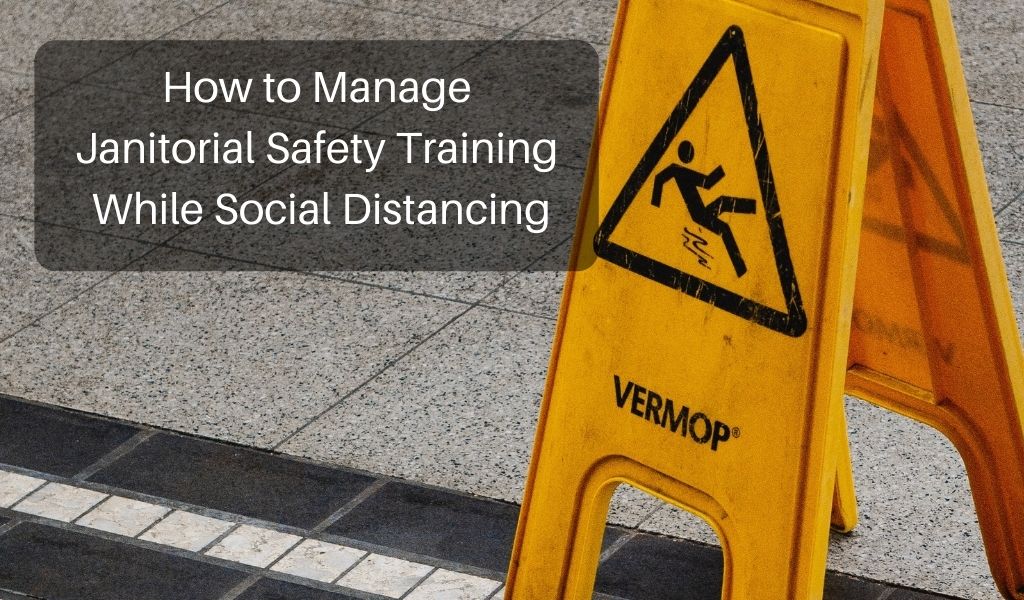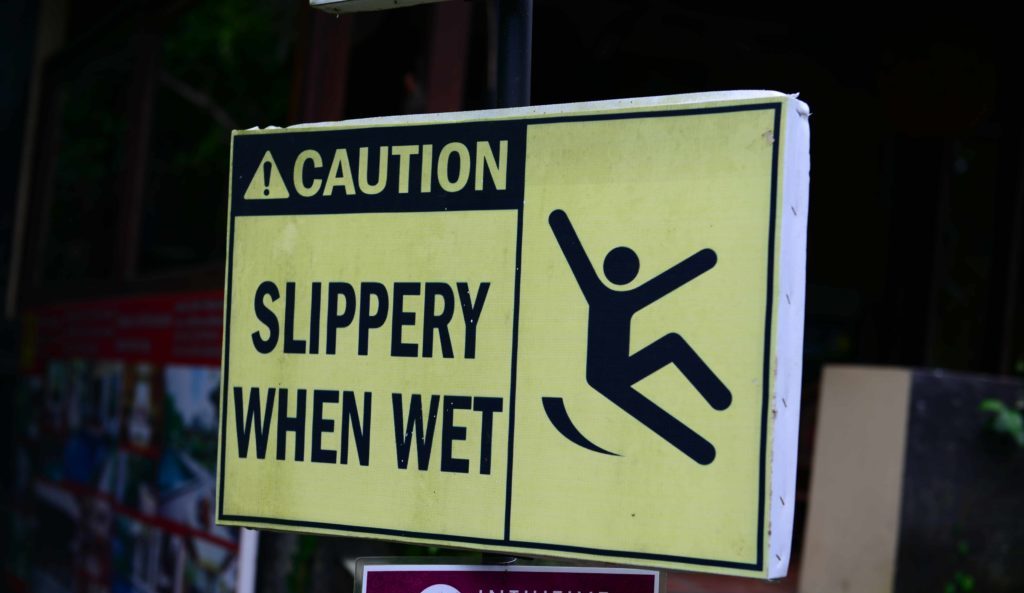Janitorial safety training is always important, but it may be more vital than ever. What can you do if you have to train your team while you’re socially distant?
Janitorial safety training is probably near the top of your new employee onboarding list, as it should be. It’s essential to ensure that your team and your clients don’t get injured or sick. It only takes one mislabeled product to have a disaster on your hands.
In these days of social distancing, training is more complicated. And though there’s a lot to be said for in-person and close contact safety training, we’ve learned a lot of new ways to get things done. There are some advantages that come with that, too. For example, once you figure out how to conduct and manage your janitorial safety training from a distance, you could train larger groups more efficiently.
You could also adapt your janitorial training to larger geographical areas. Your clients don’t necessarily need to be close by. You could expand and train an entirely new crew for clients located far outside your former boundaries. That’s another topic, however.
The point is that training, and especially safety training, has changed. But once you perfect it, there are a lot of potential benefits.
Manage your inspections and update templates quickly and easily with Janitorial Manager. Find out more about all the fantastic features we offer by Scheduling a Discovery Call today!
How to conduct janitorial safety training when you need some distance
It’s incredible to think about all the ways society has shifted to continue working, learning, and making connections even when we can’t be together in person. The janitorial industry, of course, requires a certain level of in-person activity. We haven’t yet figured out a virtual solution to cleaning an office building or a medical facility.
But that doesn’t mean everything has to be in person. Thanks to Facetime, Zoom, Skype, and similar tools, we can meet clients virtually and do “walkthroughs” to provide estimates and bids. We can use apps like JM Connect to perform inspections even when we can’t be in the facility. Or Scan4Clean can give you information about what needs to be cleaned in a room or when it was last cleaned.
Janitorial safety training can fit right into this concept, as long as you manage it correctly. But let’s start with a few resources.
- OSHA: The Occupational Safety and Health Administration has a wide variety of online resources covering almost anything you could imagine. There is a general list of virtual tools, checklists, and such that you can explore, from evacuation plans and procedures to identifying hazards to very specific tutorials regarding the health and safety of janitorial workers in hospitals.
- BSCAI: Building Service Contractors Association International offers a virtual disinfection and safety training course specifically designed for frontline janitorial workers.
- Design your own: Designing your own janitorial safety training program will take some work, but it could give you the opportunity to go into detail about the issues your employees may come across. This is especially true if you specialize. For example, if your clients are in the boating or fishing industry, you could include aspects of boating safety in your training. As a bonus, if you create videos for your training, you could upload them to YouTube to extend your reach and build a reputation as a subject expert.
Once you’ve decided where you want to get your material from, the question becomes how can you deliver it to your new (or even experienced) employees. Luckily, online and virtual training is not new, so there are a number of best practices already available when it comes to distance learning.
- The material needs to be accessible. What does this mean? Most importantly, you need to ensure your team can understand the material. Ideally, you can use resources that are in their primary language.
- The training needs to be practical. Neither you nor your employees care to waste time going over the tiny details of the chemical composition of bleach. They do want and need to know what to do if they get bleach in their eye.
- Use active training as much as possible. It’s not especially fun sitting in front of a computer to take a lengthy janitorial safety training. While this might be your only option, do your best to look for other options. Active training, such as walking around a facility to observe hazards, is easier for most adults to digest. And you can still keep some distance while you do that.
- Share the “why” of the information. People are much more likely to follow safety protocols when they understand why they exist. “Don’t mix bleach and ammonia” isn’t nearly as effective as “don’t mix bleach and ammonia because it reacts and creates a deadly gas.”
- Don’t discount on-the-job training. Empower your team to not just recognize safety issues, but to point them out. These moments can be learning experiences for the entire team.
Throughout your janitorial safety training, be sure you don’t overlook the power of checklists. If you design your own training program, a checklist can help you determine what you need to cover, and if you’ve managed to do it. You can use a checklist to decide whether or not an outside safety training program meets your needs.
Beyond that, however, a checklist is incredibly helpful for your team as they navigate potentially hazardous issues, be that low lighting, slippery surfaces, contaminated environments, or even general safety concerns like proper lifting techniques and wearing non-slip footwear.
Socially distant janitorial safety training might not be ideal, but it’s not impossible. And it serves a purpose far beyond those we may need at the moment. Once you have a system down for this, you could be an unstoppable force in the janitorial world. Your commercial cleaning empire can be vast and lucrative. And it all begins with these simple steps.
Clean up your cleaning business with Janitorial Manager! Sign up for a free Discovery call today to learn more about managing work orders, inspections, employee performance, and so much more—all in a single app!


